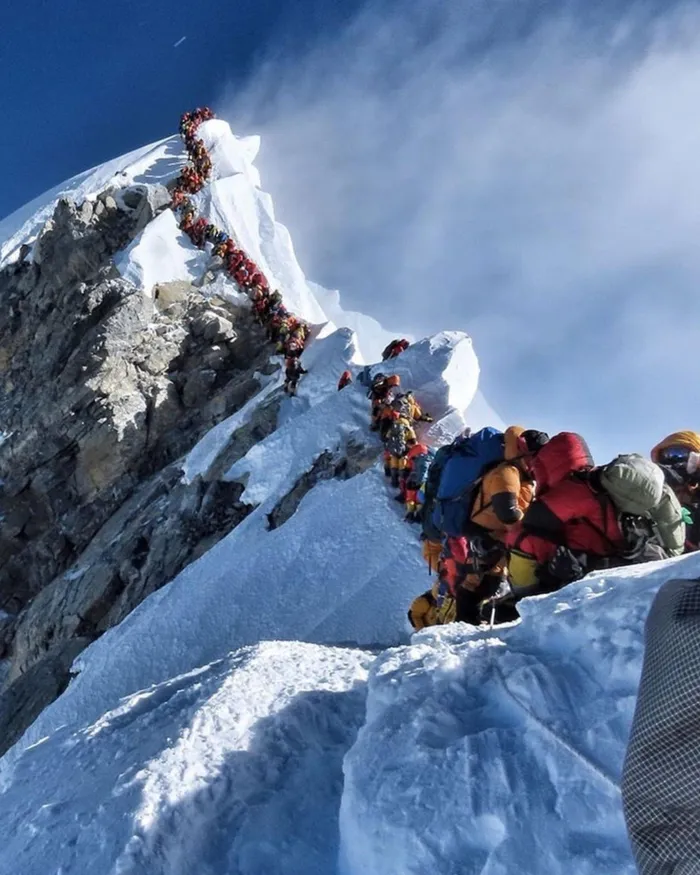Nepal cracks down on Everest climbs: only qualified mountaineers allowed after record deaths
MOUNTAIN CLIMBING

The change comes after growing concern over overcrowding, safety issues, and a rise in deaths on Everest’s slopes.
Image: X/@tradingMaxiSL
Mount Everest might sit at the top of many people’s bucket lists, but it’s not a mountain you can just show up at and climb anymore.
The Nepalese government is now making moves to tighten access to the world’s highest peak, proposing that climbers must first summit at least one 7,000-metre mountain in Nepal before being granted a permit.
The change comes after growing concern over overcrowding, safety issues, and a rise in deaths on Everest’s slopes.
Climbing Everest has a long and storied history. It was first successfully summited in 1953 by Sir Edmund Hillary of New Zealand and Tenzing Norgay, a Nepali Sherpa climber.
Since then, it has become a global symbol of extreme adventure. But in recent years, Everest has become more accessible, sometimes to a dangerous degree.
Nepal issued 478 climbing permits in 2023, a record number that experts say directly contributed to the dangerous crowding seen near the summit. At least 12 climbers died, and five went missing last year alone. In 2024, eight climbers have already died.
Much of the danger lies in what's known as the "death zone" - the area above 8,000 metres where oxygen levels are too low to support human life for extended periods.
Long queues in this zone can become deadly, especially when climbers are forced to wait in freezing conditions with limited oxygen.
To address these issues, Nepal is drafting a new law that would require climbers to first scale a 7,000-metre mountain in Nepal before attempting Everest.
Climbers would also need to be accompanied by Nepali mountain guides and a sardar (head of the local team), both of whom must be Nepalese citizens.
The goal is to reduce risk, limit the number of inexperienced climbers, and protect the safety of both locals and international adventurers.
Not everyone is on board with the specifics of the draft.
International expedition leaders, like Lukas Furtenbach of Austria-based Furtenbach Adventures, argue the rule should include other 7 000-metre peaks around the world, not just those in Nepal.
“That wouldn’t make any sense,” said Furtenbach, currently leading a team on Everest. He added that popular training climbs like Ama Dablam, Aconcagua, and Denali should count too.
He also raised concerns about the limited number of qualified Nepali mountain guides, saying that other highly trained guides, such as those certified by the International Federation of Mountain Guides Associations (IFMGA), should also be allowed to operate on Everest.
Garrett Madison, of the US-based Madison Mountaineering, agreed. He believes a 6,500-metre peak anywhere in the world should be enough preparation. “It’s too difficult to find a reasonable 7 000-metre plus peak in Nepal,” Madison said.
The draft law has been submitted to Nepal’s National Assembly, where the ruling coalition holds enough power to pass it.
For now, climbers dreaming of Everest may need to add another summit or two to their list before they even get close to base camp.
Related Topics:
